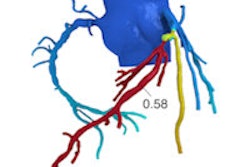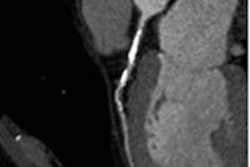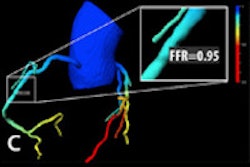Australian researchers are using a CT-based technique to analyze blood flow of the coronary arteries in 3D and profile flow changes to predict heart disease, according to a study to be presented at this week's American Roentgen Ray Society (ARRS) meeting in Toronto.
Investigators from Curtin University in Perth used the technique, called computational fluid dynamics (CFD), to identify risk factors for the development and progression of coronary artery disease.
The group generated both idealized and realistic coronary models using CFD simulations of hemodynamic flow. The results showed a direct correlation between left coronary angulation and wall-shear stress changes, according to the researchers.
"Analysis of CFD complements cardiac CT imaging by being able to define internal biomechanics, including stresses and strain within the coronary artery system," said study co-author Zhonghua Sun, PhD, in a statement.
By combining cardiac CT imaging with qualitative and quantitative insights offered by computation, CT becomes a powerful risk assessment tool, he said.


















